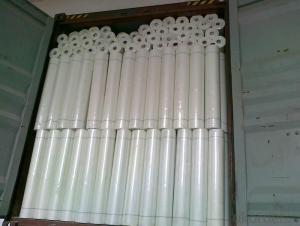Fiberglass cloth and resin are two materials that have revolutionized the construction industry. They are a dynamic duo, working together to create strong, durable, and versatile structures. Let’s dive into the world of fiberglass and resin, and explore their many applications and benefits.
The Magic of Fiberglass Cloth
Fiberglass cloth is a woven fabric made from fine glass fibers. It is lightweight, yet incredibly strong, making it an ideal material for various construction projects. The fibers are woven together to create a fabric that can be easily cut and shaped to fit any project. This flexibility allows for endless design possibilities, from boat hulls to architectural structures.
Resin: The Binding Force
Resin is a versatile substance that acts as a binding agent for the fiberglass cloth. It is a type of polymer that hardens when mixed with a catalyst. The combination of fiberglass and resin creates a composite material that is stronger than the sum of its parts. This composite is resistant to corrosion, water, and many chemicals, making it perfect for harsh environments.
Working Together
When fiberglass cloth is soaked in resin, the two materials work together to create a strong and durable structure. The resin seeps into the fibers of the cloth, binding them together and forming a solid, unified material. This process is called lamination. The result is a material that is lightweight, yet incredibly strong and resistant to various environmental factors.
Versatility in Construction
The combination of fiberglass cloth and resin has opened up a world of possibilities in construction. From residential homes to commercial buildings, this dynamic duo is being used in a variety of applications. Here are just a few examples:
– Boat Building: Fiberglass boats are known for their strength and durability. The lamination process allows for the creation of sleek, streamlined hulls that are resistant to water and marine life.
– Architectural Structures: Fiberglass and resin are used in the construction of various architectural elements, such as curved walls, domes, and decorative features. Their flexibility and strength make them ideal for creating unique and eye-catching designs.
– Infrastructure: Bridges, tunnels, and other infrastructure projects can benefit from the use of fiberglass and resin. Their corrosion-resistant properties make them perfect for long-lasting structures that can withstand the test of time.
– Reinforced Concrete: Fiberglass cloth can be used to reinforce concrete, providing additional strength and durability. This is particularly useful in areas prone to earthquakes or other natural disasters.
The Art of Laminating
Laminating fiberglass cloth and resin is an art form in itself. It requires skill, patience, and attention to detail. The process involves several steps:
1. Preparing the surface: The surface must be clean and free of any contaminants to ensure proper adhesion of the fiberglass and resin.
2. Cutting the cloth: The fiberglass cloth is cut to the desired shape and size, taking into account the contours of the project.
3. Mixing the resin: The resin and catalyst are mixed in the correct proportions to achieve the desired consistency.
4. Applying the resin: The resin is applied to the surface, ensuring even coverage.
5. Laying the cloth: The fiberglass cloth is carefully laid onto the resin-coated surface, ensuring no wrinkles or air bubbles.
6. Removing excess resin: Any excess resin is removed, and the cloth is smoothed out to ensure a tight bond with the surface.
7. Curing: The resin is allowed to cure, hardening the composite material and creating a strong, durable structure.
The Future of Fiberglass and Resin
As technology advances, so does the use of fiberglass cloth and resin in construction. New techniques and materials are being developed to improve the strength, durability, and sustainability of this dynamic duo. Innovations such as self-healing resins and eco-friendly resins are on the horizon, promising an even brighter future for fiberglass and resin in the construction industry.
In Conclusion
Fiberglass cloth and resin are a powerful combination in the world of construction. Their versatility, strength, and durability make them an ideal choice for a wide range of applications. As we continue to explore new ways to use these materials, the possibilities are endless. The dynamic duo of fiberglass and resin is here to stay, and we can’t wait to see what they will accomplish next.

